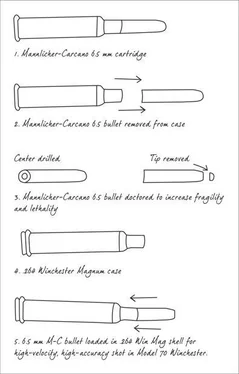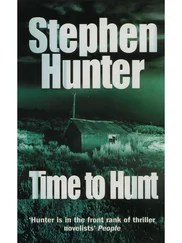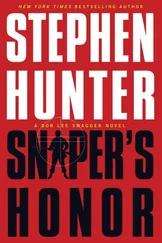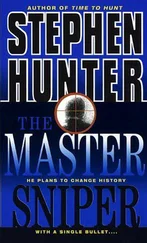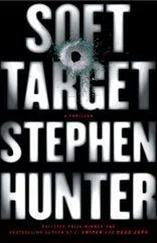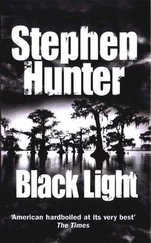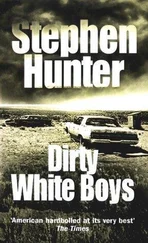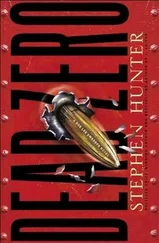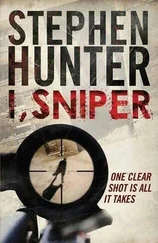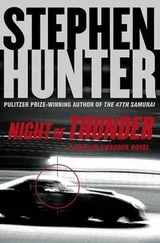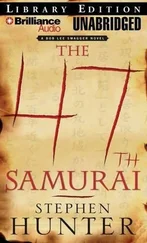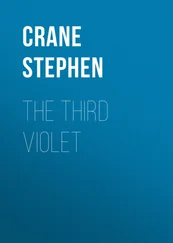Stephen Hunter - The Third Bullet
Здесь есть возможность читать онлайн «Stephen Hunter - The Third Bullet» весь текст электронной книги совершенно бесплатно (целиком полную версию без сокращений). В некоторых случаях можно слушать аудио, скачать через торрент в формате fb2 и присутствует краткое содержание. Жанр: Триллер, на английском языке. Описание произведения, (предисловие) а так же отзывы посетителей доступны на портале библиотеки ЛибКат.
- Название:The Third Bullet
- Автор:
- Жанр:
- Год:неизвестен
- ISBN:нет данных
- Рейтинг книги:5 / 5. Голосов: 1
-
Избранное:Добавить в избранное
- Отзывы:
-
Ваша оценка:
- 100
- 1
- 2
- 3
- 4
- 5
The Third Bullet: краткое содержание, описание и аннотация
Предлагаем к чтению аннотацию, описание, краткое содержание или предисловие (зависит от того, что написал сам автор книги «The Third Bullet»). Если вы не нашли необходимую информацию о книге — напишите в комментариях, мы постараемся отыскать её.
The Third Bullet — читать онлайн бесплатно полную книгу (весь текст) целиком
Ниже представлен текст книги, разбитый по страницам. Система сохранения места последней прочитанной страницы, позволяет с удобством читать онлайн бесплатно книгу «The Third Bullet», без необходимости каждый раз заново искать на чём Вы остановились. Поставьте закладку, и сможете в любой момент перейти на страницу, на которой закончили чтение.
Интервал:
Закладка:
Swagger then looked at the first X on Elm Street, which would have been Lee Harvey’s second shot fired, after the miss. That was probably his best opportunity after passing on the turner below him and after recovering too quickly and missing the first shot, but he’d blown that one too, at least in the sense of missing the head shot and landing a few inches low, in the back under the neck. Yes, he was coming off a swift bolt throw, but the target was under two hundred feet away, and from the target angle (always the angles!), it did not present an image moving harshly or radically. By his standards, he missed, and given the president’s lack of visible reaction, Oswald might have counted it as a clean miss. You’d think, still, if he were going to hit a head shot, that was the one he would have hit, not the third, even farther out, the target even smaller, coming off another fast bolt throw. It was the third he’d hit. And he had hit it. No doubt, no regret, no pain, no nothing, no force on Earth could change the fact that a 6.5 mm bullet had hit Jack Kennedy in the head at 12:30 p.m. November 22, 1963, and shocked the world with the visceral reality of the shattered skull, the vaporized brain tissue, the animal vibration of catastrophic trauma.
Could Oswald have made that shot? Bob considered. The question wasn’t abstract; he might have had the skill, but that skill had to be expressed through the system he used, and it had to be forced through the prism of the actual. He was a punk nobody shooting at the president of the United States in a hurry, working a bolt that had to be at some level unfamiliar to him – he’d trained on the old semi-auto M1 Garand, as had Bob – so the adrenaline must have been coursing through his veins like lighter fluid. All the buck-fever things must have been happening; eyes wide to f/1, auditory exclusion, loss of fine motor control, vision impingement, the sensation of oxygen debt. Yet he made the shot.
It was an easy shot. Bob probably could have made it offhand, as any of the dozens of snipers he’d known could have. So what? The issue was, could this little monkey from all our dark furious dreams, with his hatred and bitterness and political crackpottiness, his incompetence and long history of failure, could he have made that shot on that day at that time?
It was stupid to ask, even if thousands had done so publicly. That’s because to answer, you had to be familiar with the capacities of the rifle at its maximum and at its minimum. He turned, and as if by magic, there it was: a full-size silhouette of C2766, the Mannlicher-Carcano Model 1938 carbine made in Terni, Italy, in 1941 and scoped by an anonymous mechanic – “gunsmith” was far too grand a word – with a cheesy 4X tube out of a Japan that hadn’t yet discovered its postwar optical engineering genius and was attached to the receiver by a machined piece of pot metal in the form of a scope mount, all of it held together by two screws when there should have been four. The image floated at Bob off a signboard a few feet away. He walked over and confronted the thing as reproduced in the full-size photo.
The FBI forensic ballisticians had done a number on the weapon as soon as they received it, but Bob had looked through the testimony and found it somewhat spotty. Frazier, the agent, was revered in the Bureau as a gun expert, but Bob noted that he was a high-power shooter by choice (and a champion at that), which meant he specialized in the discipline of shooting large, stable targets at long range (out to six hundred yards) with service rifles through open sights. His skill set would have included stamina, sophisticated wind doping, trigger control, and long-term nervous system control. By experience, he was not particularly knowledgeable about or comfortable with the telescopic sight or precision shooting. The one shot/one kill mantra of the sniper would have been lost on him. Though his testimony in certain areas seemed problematic, Swagger knew he’d have to look more carefully at it on another day.
Here, in 2-D glory, the rifle looked like something an eight-year-old tin soldier in a red papier-mache tunic might carry in a junior high version of The Nutcracker. He’d been dragged to a production when Nikki was in her ballet phase and remembered the stiff-legged little boys with the red circles painted on their cheeks under the tall cardboard faux-hussar hats. That was how miniaturized and quaint it seemed. It was small, hardly a weapon of war. Like many of the rifles of the Mediterranean, it seemed somehow to lack seriousness of purpose; it wasn’t a heavily machined vault that could shoot a bullet a mile with accuracy or provide a platform to drive a bayonet into a man’s guts, like a Mauser, a Springfield, a Lee-Enfield. You might use it to pot rabbits, as it was of light caliber: roughly .264 in an age before high-velocity powders, not a .30 with its tons of muzzle energy. The ballistics were unimpressive. He looked at the stamped pot-metal scope mount, well resolved in the photo blowup, and noted that it boasted enough detail to depict the two empty screw holes on the plate that held rifle to scope. What influence would that have had on events? How long would the two screws hold the scope tight, if they’d been tightened at all? Through one shot or two or, most important, three? What would the consequences be of a loose scope, which would reset itself whimsically after each shot, screwing up accuracy? All good shooters tightened their scope screws before they fired; had Oswald? Would he have known that? He wasn’t trained on scopes in the Corps, just the knurl-index click system of the M1 peep sight, a brilliant mechanical device in its day. Did Oswald understand the concept of zeroing a scope? Was this scope zeroed? Was it altered after recovery? All these questions would have to be answered in re: this particular rifle, not any other, before one could issue a comment on its capabilities.
If that was the thing that did it, he’d have to know more about it. He resolved to acquire and study such a piece – they were available dirt cheap, usually under three hundred or so. Could he learn the bolt throw, could he find a target fast through that little four-power, not particularly clean scope, could the rifle sustain its accuracy over a string of shots, could that improvised sling improve the accuracy, if indeed Oswald, who knew of slings from the Marine Corps, applied it during his shooting? All yet to be discovered.
Swagger tired of the place. No big deal, no emotional reaction to the foreign visitors, the running kids, the goofball Ohio tourists; it was just enough, and was time to go.
Now, the grassy knoll. It was a kind of absurd conceit, a mock Greek temple etched into a grass hillside along a busy commercial road in the heart of the city. Someone’s long-ago idea of class, when the Greek model was beloved and appreciated in America. But it looked like something out of an ancient Rome movie, and you half expected to see people lounging around in togas.
Swagger stood to the side of the circle of columns at the height of the crest and tried not to think of togas; he considered the angles. Below him, maybe fifty feet, cars rushed down Elm toward the triple underpass. The slope of grass ran down to the curbside, the road itself fed the commuters onto the Stemmons Freeway, and beyond that stretched the field, also pool-table green, of Dealey Plaza.
Here, the shooting was so close. Some kind of professional hard-core hit team without access to the TBD, which loomed to the left through some thin trees, almost certainly would have chosen this spot. They could yank subguns-grease guns, Thompsons, Schmeissers, all the common war bring-backs plentiful in the America of 1963 – and lay down a fusillade that no man could survive. Then they could race off and try to gunfight their way to freedom, but they’d fail, enough police would arrive eventually, and they’d die of extreme ventilation of the twelve-gauge variety at some roadblock a few miles away.
Читать дальшеИнтервал:
Закладка:
Похожие книги на «The Third Bullet»
Представляем Вашему вниманию похожие книги на «The Third Bullet» списком для выбора. Мы отобрали схожую по названию и смыслу литературу в надежде предоставить читателям больше вариантов отыскать новые, интересные, ещё непрочитанные произведения.
Обсуждение, отзывы о книге «The Third Bullet» и просто собственные мнения читателей. Оставьте ваши комментарии, напишите, что Вы думаете о произведении, его смысле или главных героях. Укажите что конкретно понравилось, а что нет, и почему Вы так считаете.
